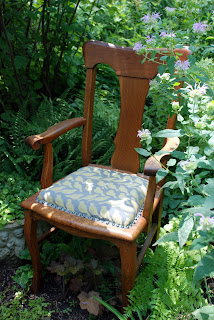The Vine arises from her Mother's Juice:
When feeble Plants or tender Flow'rs decay,
They to their Seed their Images convey.
Matthew Prior
The drawer in the Herbarium contains a collection of seeds that originally were acquired for purposes of drawing. The little glass containers with plastic lids they are stored in were rescued from the trash at the American Museum of Natural History by our son, Barrett. The bottles retain the information that was taped to them by the ichthyology department and plant information has been added if known. There are a few seedpods that wander around the drawer awaiting a bottle big enough to suit them but not so tall that the drawer won't close.
Along with loose seeds there are packets brought from Linnaeus's garden in Uppsala by Susan Smith and Michael Schuck, black morning glories in a Christmas card from Wanda Miller, bluebonnets from the Johnson Library in Austin, a collection from Nancy Korda's B&B garden in Silverton, Oregon, lettuce from Villandry brought home by Val Overholt, and exotic gourds brought from the festival in their honor in Lapeer, Michigan, by Liz Cheslock. Vintage products include a box for nasturtiums and a package of belladonna leaves.
It is obvious that very early people understood the purpose of seeds or there would never have been the development of agriculture. The first great botanist who wrote something significant about seeds was Andrea Cesalpino (1519-1603) a student of Luca Ghini.
In his great work, De plantis libri xvi, plants were not just listed alphabetically but were ordered by their reproductive systems - their seeds and fruit. This was, of course, too simple a system to be truly accurate but it did move the field of taxonomy forward.





















